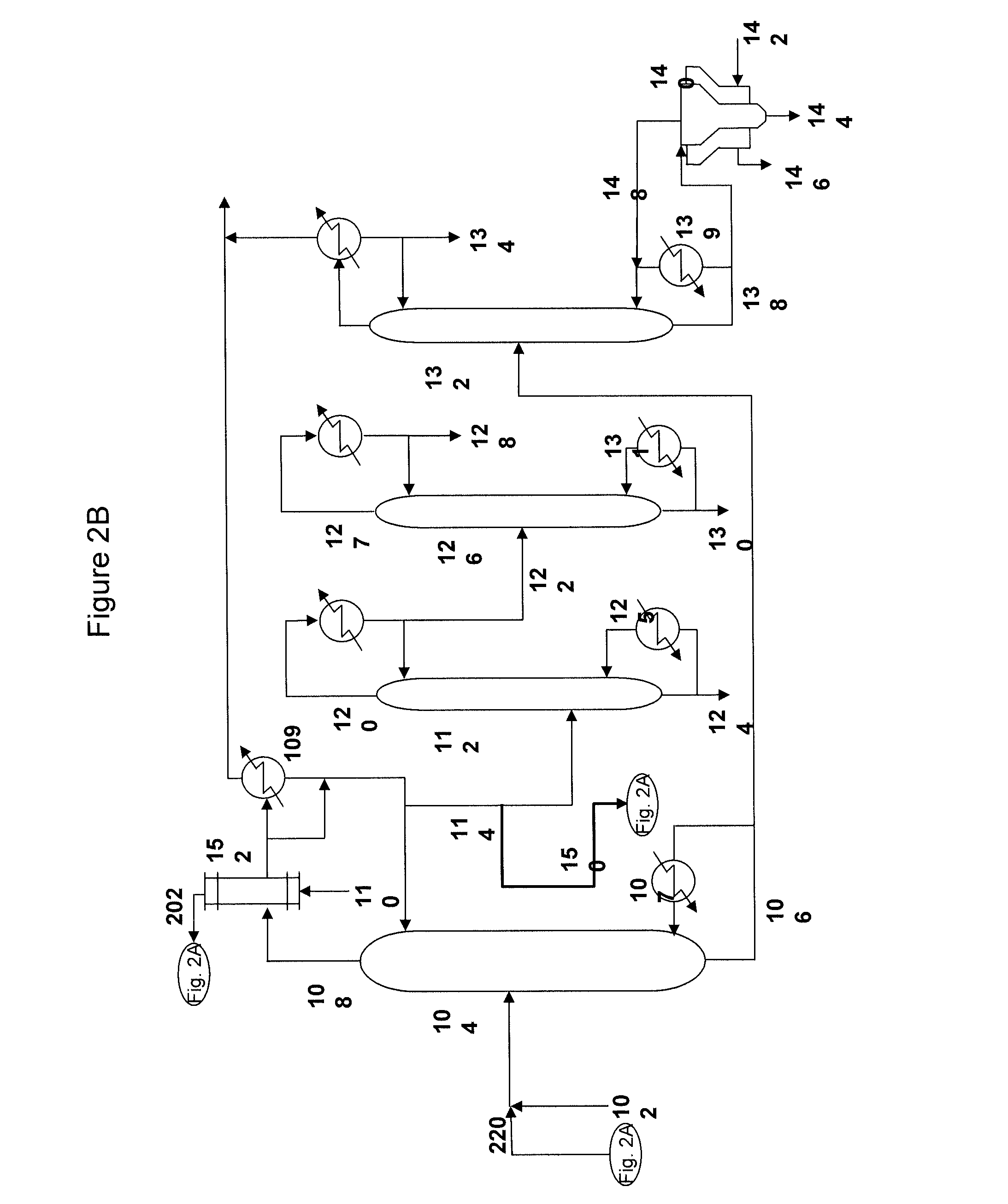Use of hydrocarbon diluents to enhance conversion in a dehydrogenation process at low steam/oil ratios
a technology of ethylbenzene and hydrocarbon diluent, which is applied in the direction of liquid-gas reaction process, chemical apparatus and processes, organic chemistry, etc., can solve the problems of reducing catalyst performance, shortening catalyst life, and rapid temperature drop, so as to reduce dehydrogenation efficiency and reduce styrene yields , the effect of increasing production times
- Summary
- Abstract
- Description
- Claims
- Application Information
AI Technical Summary
Benefits of technology
Problems solved by technology
Method used
Image
Examples
Embodiment Construction
[0019]Referring to FIG. 2A, a method for the production of styrene from the catalytic dehydrogenation of ethylbenzene is illustrated. Feed stream 202, which includes ethylbenzene and primary steam, is combined with oil based diluent 150 and superheated steam 206 and fed into a dehydrogenation reactor 212, which contains any appropriate solid-phase dehydrogenation catalyst.
[0020]Reactor setup can vary from multiple beds contained in a single reactor, or single beds in multiple reactors, or a mixture of these arrangements. As illustrated, two reactors 212, 214 in series are used for the desired conversion. The effluent from reactor 212 is cross-exchanged with superheated steam 208 and introduced to a second dehydrogenation reactor 214 for continued reaction. Following the dehydration reaction, the effluent from reactor 214 contains a mixture of styrene monomer, unreacted ethylbenzene, benzene, and toluene. The effluent is then passed through a series of waste heat exchangers 204, fed ...
PUM
| Property | Measurement | Unit |
|---|---|---|
| pressure | aaaaa | aaaaa |
| operating temperature | aaaaa | aaaaa |
| operating temperature | aaaaa | aaaaa |
Abstract
Description
Claims
Application Information
 Login to View More
Login to View More - R&D
- Intellectual Property
- Life Sciences
- Materials
- Tech Scout
- Unparalleled Data Quality
- Higher Quality Content
- 60% Fewer Hallucinations
Browse by: Latest US Patents, China's latest patents, Technical Efficacy Thesaurus, Application Domain, Technology Topic, Popular Technical Reports.
© 2025 PatSnap. All rights reserved.Legal|Privacy policy|Modern Slavery Act Transparency Statement|Sitemap|About US| Contact US: help@patsnap.com



